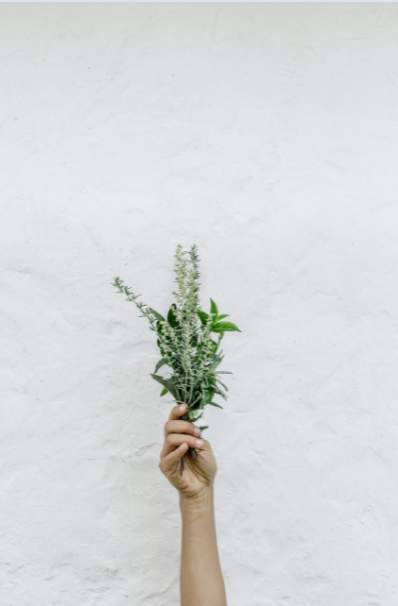Get 10% OFF your first order
Get 10% OFF your first order
By Crystal Baldwin

Fresh Stinging Nettles are one of the many gifts of spring and early summer (for us here in Colorado). It's fresh, green color ushers in the season of "Spring Greens" which we love to eat in abundance to help clear out our winter digestive tract and get things refreshed and moving.
If you have nettles growing in your yard or on your property, whether wild or domesticated you might already have an idea of what to do with it. But, if you have been battling it like a weed, a very painful weed - fight no more! You can utilize this amazing plant for its incredible nutritional benefits & flavor!
Benefits of Stinging Nettles
Stinging nettle (Urtica dioica) has been used for thousands of years to treat so many issues including; anemia, painful muscles & joints, arthritis, gout, eczema, and may reduce blood pressure. It is commonly used for diabetes, allergies, urinary tract infections (UTI's), kidney stones and osteoarthritis.

So if it has stingers, why do we go through all of the trouble to harvest, process and eat this little green wonder? Because nothing green we eat has this much nutrition packed in a little green leaf!
This amazing nutritional powerhouse has so many benefits that you will not believe you can get all of this from just one cup of greens. Just sipping it as a tea can bring relief of so many conditions. The nutrients include:
Nettles are for sure a super food as they are so high in chlorophyll and they are off the charts in their mineral, protein and vitamin content. Yes, 29 times more calcium and 9 times more iron than spinach! This is why we go through the bother to harvest and eat nettles. Plus, they taste pretty darn good too.
The "Sting" of Stinging Nettles

It gets its name honest - trust me if you touch it... it will STING! Urtica dioica, comes from the Latin word uro, which means “to burn,” because its leaves can cause a temporary burning sensation upon contact. Stinging nettles has fine needle like hollow hairs on the leaves and stems that contain irritating chemicals that cause burning, itching, swelling and sometimes a rash or blisters.
The chemicals that are released from the tiny hairs include formic acid, histamine (hence the swelling), acetylcholine and serotonin to name a few. the hairs themselves will break off, act like needles injecting its chemicals and attach to the skin which is why it's important not to touch the skin after you get stung.

How to Treat a Sting from Stinging Nettles
If you get stung by nettles, you will usually immediately feel a burn or itching sensation. You will want to rub the area but ignore this impulse! It is important NOT TO TOUCH your skin or the rash for the first 10 minutes. Its best to let the chemicals dry on your skin as they will be easier to remove. Any touching or rubbing will push the irritating chemicals and needles deeper into the skin and can make the reaction last longer.

To remove, after the 10 minutes of waiting (yes, it will sting or burn during this time), use soap and water and gentle wash and rinse away the chemicals. Often times the fine, needle like hairs will still be stuck to your skin. Take some tape and go over the area to remove any remaining fibers and hairs.
Even the Stinging is Medicinal
Did you know that some people (me included) purposely sting themselves with stinging nettles? This treatment is called Urtication and is a very ancient form of medicine. Yup, that's right purposely stinging yourself is medicine.
When we have a painful area or organ in the body, often there is constricted blood flow to that area. This can cause an accumulation of chemical wastes and without proper blood and lymph circulation the toxins can not be removed. Uritication creates heat and a increase of blood and lymph to that area that helps to clear out those built up toxins and bring fresh nutrition in.

Uritication is often used for arthritis or chronically painful areas. The best way to do this is to either slap the area with a stalk of nettles, continuing to do so until the area becomes red, or just rub the leaves on the area. For best results, do this daily with fresh nettles for a week or so. The benefits usually last for 6-12 hours immediately afterwards and become more pronounced after a few applications. This can be really helpful if you are having a painful episode that medication is not helping or you want to skip your pain meds.
Oddly enough some people have reported having benefit in different parts of the body from the area treated. One lady reported using nettles on her thumbs for arthritis and noticing afterwards the arthritis in her hip was better? Our bodies take the healing from plants as needed - don't question it!

I routinely do this on arthritic areas on my body and honestly don't find the stings that bad. I do welt up a bit but as long as I don't touch it, it seems to calm down on its own after about 10-20 minutes and the stinging stops. For me, sometimes the arthritis pain will get slightly worse for just a hour or so and then it seems to subside and be better. I generally don't wear long gloves when harvesting nettles and don't mind the stings on my wrists and hands since that's where most of my arthritis is located (I do avoid holding the stems without gloves).
If you have never been stung with nettles before, try doing a test spot and gently brush up against the leaves to see how you react before slapping your body with a stem or doing a larger area. If you are highly allergic to plants, this might not be the best thing for you- check with your doctor first.
Safely Harvesting Nettles

You will want to harvest nettles in the spring when the new leaves appear. Avoid harvesting the leaves once the the plant flowers as the leaves will then contain cystolith crystals that are hard on the kidneys, can upset the urinary tract and have a laxative effect. You can cut the plant down about two thirds and the fresh growth that comes back is fine to eat.
It is very easy to harvest nettles with a few simple tools. Wear a thicker, hardy, garden glove that comes up your wrist a bit. Use long tongs and scissors and have a basket close by. SImply hold the nettles with the tongs and cut towards the base, leaving the bottom leaves so the plant can grow fresh leaves. Drop your nettles in the basket and carry to the house.
When removing the leaves from the stems, continue with wearing your gloves and using your tongs to hold the stem while you cut the leaves off. Use tongs to drop your leaves into the boiling water. After blanching and draining the "sting" is gone and your nettles are safe to handle.
Other methods that stop the sting include chopping, cooking, and drying nettles, although sometimes they can still be a little bit itchy. When making pesto, some people do not blanch the leaves but instead opt to just chop it up in the food processor...I have not been brave enough to try that just yet!

Ingredients:
Directions:
1. Cut nettle leaves off the stem, rinse, blanch in boiling water for 2 minutes
2. Transfer nettles to cold ice bath to stop the cooking and keep green color
3. Drain and squeeze to remove excess water, set aside
4. Place basil leaves & toasted pine nuts in a food processor and blend
5. Add drained nettle leaves, parmesan, garlic, salt & pepper
6. Turn on food processor and slowly pour olive oil in top of processor
7. Continue blending, scraping the sides down until smooth
8. Add more olive oil as needed to get a creamy blend
*Note - you can freeze pesto and use it as needed. If you use more nettles you may need to increase the olive oil as the nettles will make the pesto be on the drier side.
Don't have any fresh nettles but still want the nutrition & flavor? No Problem! Simply use dried nettles, rehydrate them and use it in the recipe as above. Keep in mind dried nettles no longer has the stinger in them and you will be able to handle it safely.
When using dried nettles you will need to double the amount of nettle leaves (2 cups) and rehydrate them before adding to the pesto. To do this just add enough warm water to fully incorporate the leaves. Let it sit for 5 minutes or so and then follow directions (from step 3).
Feel free to use dried nettles in many other dishes:

*Note- if you are taking nettles daily, be aware that nettles can be very drying. You will want to add a moisturizing herb with your nettles to offset the drying that happens both internally and externally (can make your skin dry too).
We love using the herb Marshmallow root with nettles to help reduce the dryness. Marshmallow is also wonderful for the digestive tract and lubricating for the joints.




Crystal Baldwin is the owner and creator of Earth Sweet Botanicals/Boutique. She is an internationally trained and certified aromatherapist, state certified esthetician, massage therapist, herbalist, natural product formulator, artisan distiller, natural perfumer, wild food forager, blogger and educator.
Her 20-year medical background combined with her alternative medicine education brings a well-rounded and knowledgeable approach to healing.
She has studied with amazing teachers all around the world, including studying aromatherapy in Provence France, Thai massage and reflexology in Thailand and Laos, and perfumery in Grasse France.
Earth Sweet Botanicals/Boutique is a place where her expertise creates a community that can come together to learn, to heal, to explore and to share information.
Her goal is to empower each person with the ability to be in control of their own health and happiness—and to provide the tools to help them achieve those goals.
Comments will be approved before showing up.
This is one of my Mom's old family recipes and she use to make it every fall as soon as the apples came into season and every Thanksgiving.
The whole house smelled like apples and spices...such a great memory. I thought I would share this with you as it is like a hug from back home whenever I smell this cake baking in my oven...from my house to yours I am sending Thanksgiving wishes and love with this recipe.
This can be made sugar-free, low carb or gluten free
I just harvested the last basket of zucchini squash from the garden with some fresh parsley and decided to make one of my favorite quick and easy recipes - Zucchini Patties!
These are so easy to make and they are perfect for a quick dinner or they are great for breakfast as well.
Rosehips are the fruit of the rose flower. Most people are familiar with and understand how touse rose petals but are not so familiar with rosehips.
If a rose is left on the plant and not picked, it is fertilized by pollinators and the petals will fall away. The base of the flower then swells and develops its "fruit" which will look like a pod.
It is usually a soft peach color or can be pink during the hot months but once the frost hits the fruit it becomes a beautiful crimson color. This is when the "hip" is ready to be eaten.

Get 10% OFF Your First Order!
Sign-up to receive information about sales, new products, recipes, exciting classes, free events and wellness education!
